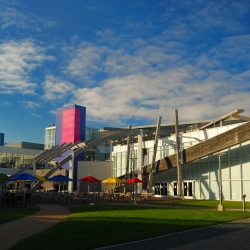
Google announced ARCore, a software-based solution for making more Android devices AR-capable without the need for depth sensors and extra cameras. It will even work on the Google Pixel, Galaxy S8, and several other devices very soon and supports Java, Unity, and Unreal from day one.
In short, it’s kind of like Google’s answer to Apple’s ARKit.
But that isn’t how Clay Bavor, VP of augmented and virtual reality at Google, would describe it. Instead, when the topic came up, he reminded me that Google Tango had its first development kit all the way back in 2014 and that they’ve slowly been building toward this vision of a future where AR is democratized and available to millions around the world. Specifically, Google wants 100 million AR-capable Android phones within just the next few months.
“I like to call it immersive computing to sidestep some of the jargon and acronym debate — VR, AR, MR — just everything. Integrating computer-generated imagery seamlessly into experiences is what it’s all about,” Bavor explains at the beginning of our interview at Google’s San Francisco office last week. “Our goal here is to make AR mainstream on Android for developers and for consumers. … We thought mobile smartphone-based AR was going to be a thing that was important years ago. The first Tango development kit was 2014 and by relaxing the constraints on the hardware, getting rid of the need for a depth sensor or additional tracking cameras we’ve honed in on our aim to prove out the technology and show the world that on consumer-grade sensors you can do really powerful AR experiences.”
From the demos I got the chance to try he’s not exaggerating. On standard Google Pixel and Samsung Galaxy S8 phones I watched robots walk across a tabletop and wave at me, trees shrink and grow from a few inches to several feet, and even a giant lion flex his muscles and look down at me as if I was really there. Similar to the first time someone tries VR, a powerful AR experience can feel like magic.
“There’s a lot of things that need to happen to make it successful though,” Bavor admits. “We’ve always known that it’s got to work at scale, so we’ve been investing in software-only solutions like ARCore, building on all of the Tango technology, just without the additional sensors. We feel that the technology is ready and we’ve figured out some of the core use cases for AR that we’re really excited about, so that’s why we’re so excited to get ARCore out there and start lighting up across the ecosystem.”
